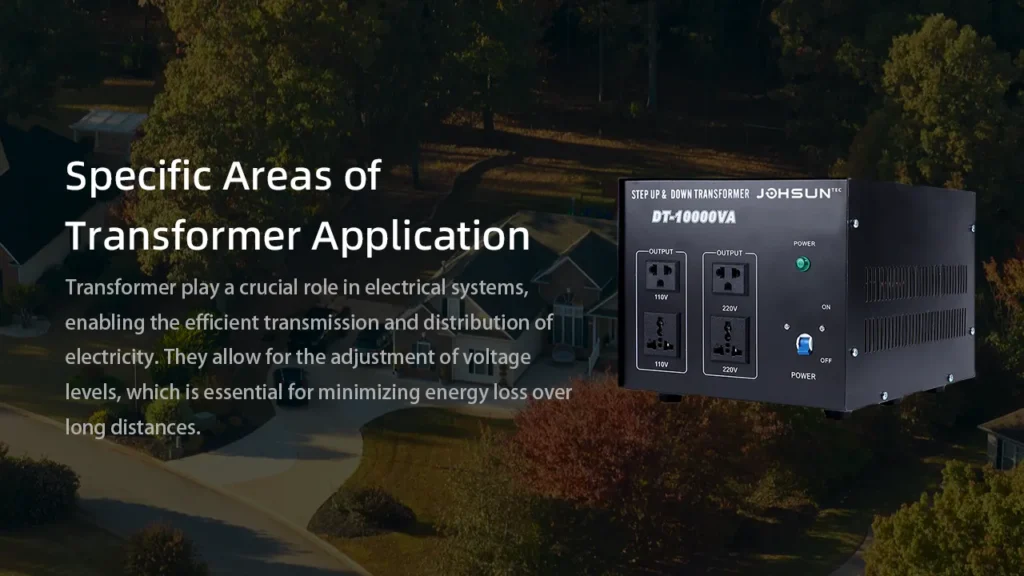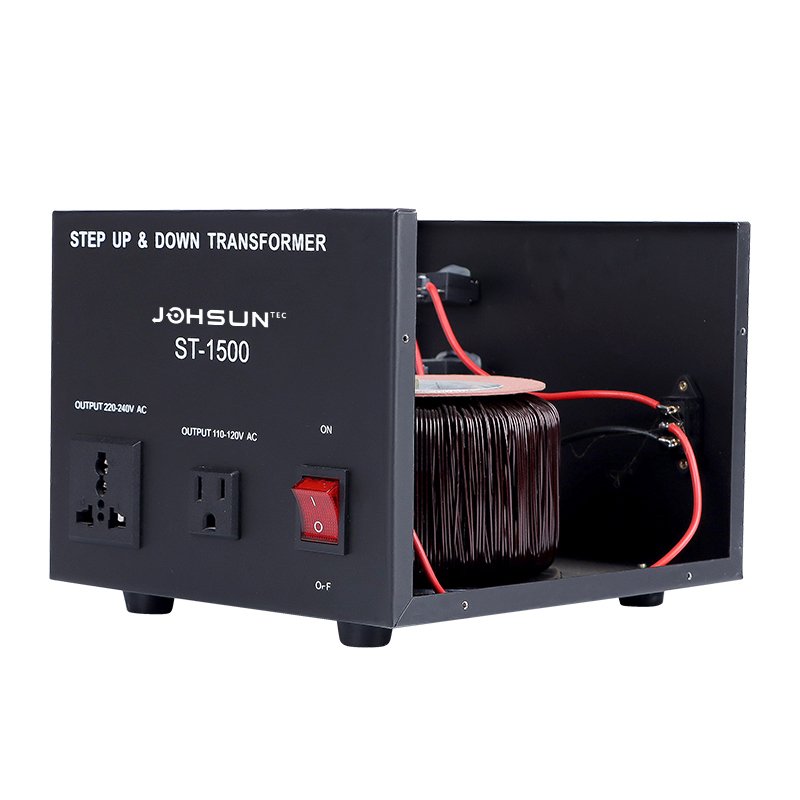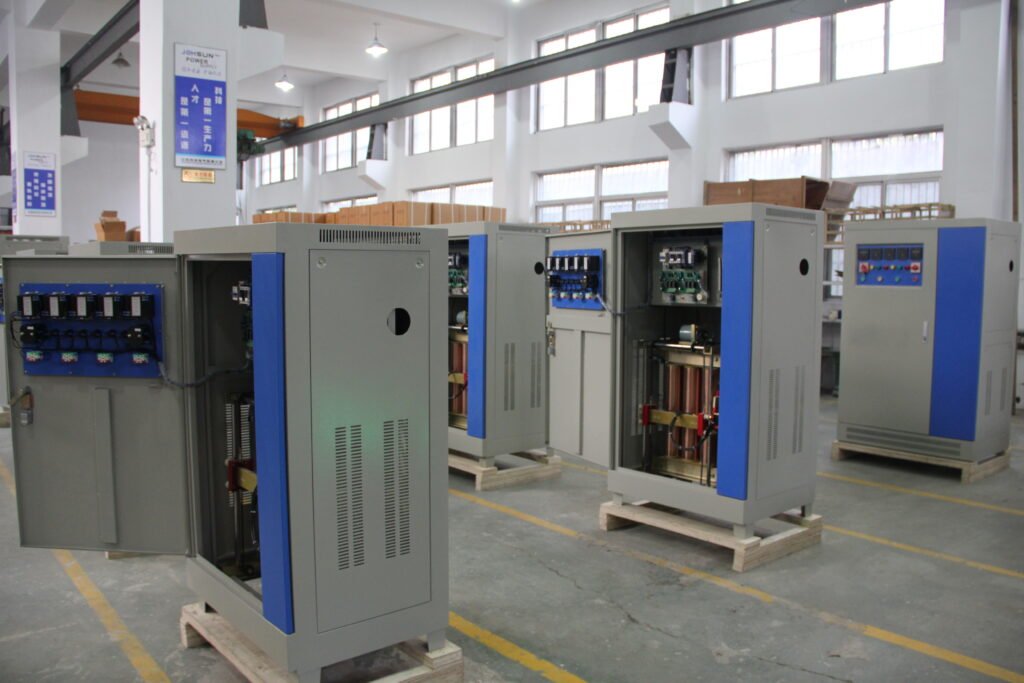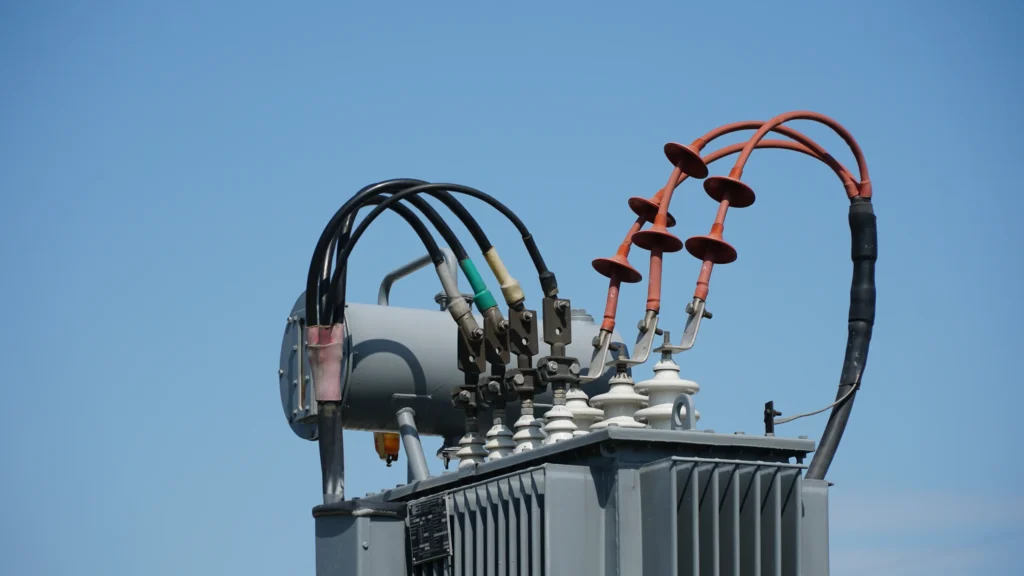Specific Areas of Transformer Application
Importance of Using Transformer
Transformer play a crucial role in electrical systems, enabling the efficient transmission and distribution of electricity. They allow for the adjustment of voltage levels, which is essential for minimizing energy loss over long distances. By stepping up voltage for transmission and stepping it down for safe use, ensure that power reaches homes and businesses without significant energy wastage. This efficiency is not just beneficial; it’s vital for modern society, as it supports everything from industrial operations to everyday household needs.
Working Principle
The operation of a transformer is based on the principle of electromagnetic induction. When an alternating current (AC) flows through the primary coil, it generates a magnetic field that induces a voltage in the secondary coil. The ratio of the number of turns in the primary coil to the number of turns in the secondary coil determines whether the transformer increases (step-up) or decreases (step-down) voltage. This relationship can be expressed mathematically as:

where Vp and Vs are the primary and secondary voltages, and Np and Ns are the number of turns in the primary and secondary coils, respectively.
Main Components
A transformers consists of several key components that work together to facilitate its function:
Core: Made from ferromagnetic material, it channels the magnetic field between coils.
Primary Coil: The winding where the input voltage is applied.
Secondary Coil: The winding where the output voltage is taken.
Insulation: Ensures that electrical components do not short-circuit and provides safety.
Specific Areas of Transformer Application
Transformer are integral to a wide array of industries and applications, each with distinct requirements and operational challenges. Below, we will delve deeper into the specific sectors where transformers are utilized, highlighting their roles and functionalities.
Industrial Applications
The manufacturing sector is one of the largest consumers of transformers. They are essential for powering heavy machinery and ensuring that production lines operate smoothly.
- Automotive Manufacturing: Transformers supply power to assembly lines, robotic systems, and welding equipment. For instance, automotive factories rely on them to ensure precise and efficient manufacturing processes.
- Electronics Production: In electronics manufacturing facilities, transformers are crucial for powering semiconductor fabrication equipment and testing machinery. This enables the mass production of electronic components and devices.
- Food Processing: Food processing plants utilize transformers to power refrigeration units, packaging machinery, and other essential equipment. This ensures optimal temperature control and adherence to food safety standards.
- Textile Manufacturing: Textile mills use transformers to operate spinning machines and dyeing equipment, facilitating continuous production processes.
Commercial Applications
In commercial environments, transformers are vital for managing electrical loads effectively.
- Shopping Centers: Transformers deliver stable power to lighting systems, HVAC units, and other critical services in large retail spaces. This ensures a comfortable shopping experience for customers.
- Office Buildings: In office complexes, transformers provide reliable electricity for lighting, computers, and communication systems. Their role in voltage regulation is crucial for maintaining operational efficiency.
- Healthcare Facilities: Hospitals depend on transformers to ensure a continuous power supply for life-saving medical equipment. They help maintain the reliability of services that are critical for patient care.
Residential Applications
Transformers are commonly found in residential settings, where they step down high-voltage electricity from power lines to safer levels suitable for household use.
- Power Distribution: Step-down transformers convert high-voltage electricity into low-voltage power that can be safely used by household appliances.
- Voltage Regulation: Transformers also regulate voltage levels within homes to prevent damage to sensitive electronic devices from voltage spikes or surges.
- Low-Voltage Lighting Systems: Many modern homes utilize low-voltage lighting systems that require transformers to convert standard high-voltage electricity into lower voltages safe for use in lighting fixtures.
Renewable Energy Systems
With the increasing emphasis on sustainable energy sources, transformers play a pivotal role in integrating renewable energy into the electrical grid.
- Solar Power: Transformers in solar energy systems convert the direct current (DC) generated by solar panels into alternating current (AC) suitable for grid distribution. They also step up the voltage for efficient long-distance transmission.
- Wind Power: In wind farms, transformers convert the variable output from wind turbines into stable voltage levels that can be integrated into the grid. Smart transformers are increasingly used to manage fluctuations in generation due to changing wind conditions.
- Energy Storage Systems: Transformers facilitate the connection between energy storage solutions (like batteries) and the grid, allowing for effective energy management during peak demand periods.
Utilities and Power Generation
Transformers are critical components in utilities and power generation facilities, enabling efficient electricity transmission over long distances.
- Power Plants: At power generation sites—whether coal-fired, natural gas, nuclear, or renewable—step up voltage levels for efficient transmission through power lines.
- Substations: Substations use and utilize it to step down high-voltage electricity for local distribution to homes and businesses. This process minimizes energy losses during transmission and ensures consumers receive a reliable supply of electricity.
Infrastructure Projects
- Transportation Infrastructure: Airports and train stations utilize transformers to power lighting systems, security measures, and various operational equipment essential for safety and functionality.
- Construction Sites: During construction projects, it provides the necessary power for tools and machinery while ensuring safety standards are met through proper voltage regulation.
In summary, transformers serve as vital components across numerous sectors by ensuring efficient power distribution, enhancing operational reliability, and supporting the transition towards renewable energy solutions. Their adaptability allows them to meet the diverse needs of industries ranging from manufacturing to healthcare and sustainable energy systems.





